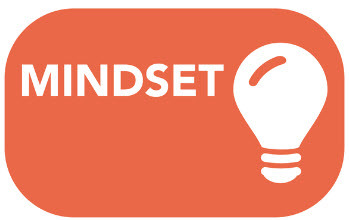March 11, 2021 MICIP Continuous Communication
Michigan Department of Education sent this bulletin at 03/11/2021 03:06 PM EST |
|
Having trouble viewing this email? View it as a Web page. |
In this Issue of MICIP Continuous Communication
You will find answers to recently asked questions, important information about the mindset shift in MICIP impacts goal development, information about the use of data set templates in MICIP, and more!
Your MICIP Questions Answered
Here are some answers to recently asked questions. You can find answers to more questions in the recently updated Spring 2021 MICIP FAQ document.
What is required of ISDs regarding continuous improvement?
- State statute requires that all ISDs have continuous improvement plans. The ISD strategic plan has typically served this role. We are currently exploring how MICIP can be used for this purpose; our vision is that the ISD continuous improvement plan/strategic plan are one in the same, with goals focused on improving services to improve outcomes for students in the districts that it supports.
- State statute requires ISD-sponsored programs/schools that have their own school codes to have continuous improvement plans. MICIP is available to fulfill this purpose. The plan may be constructed as part of the overall ISD plan, with individual programs tagged by strategy, or as a single building district plan. If you need support on how to build a plan as part of the overall ISD plan or single building district plan, plese reach out to Terry Nugent, MICIP Lead at nugentt@michigan.gov.
- ISD-sponsored programs/schools that serve students but do not have their own school codes are encouraged to have continuous improvement plans within their ISD plan, but these are not required by state statute.
How can MICIP be used to support continuous improvement for ISD programs/schools?
Should an ISD wish to use MICIP for program/school plans (numbers 2 or 3 above), it could be done in either the MICIP platform or in the MICIP Template Process in one of two ways:
- The ISD could have one goal/plan that applies to all programs/schools. For example, the ISD could have a goal for all programs/schools focused on Social Emotional Learning. In this case, the data story would consider data from all programs/schools. The goal could be written broadly enough to address the overall challenge of SEL across programs/schools while strategies could be differentiated and tagged by program/school, if necessary.
- If programs/schools are significantly different from each other, each could have its own data story/challenge, goal(s), strategies, and activities that would come together under one ISD portfolio.
 Shifting the Mindset Around Setting Goals
Shifting the Mindset Around Setting Goals
As MDE was conducting listening sessions about the process in ASSIST prior to building MICIP, one of the major complaints was the size of the plans. Depending on the size of the district, these could approach one hundred or more pages. When districts and schools were first required to use ASSIST for their continuous improvement plans, goals were typically focused on academic achievement.
At one time, plans required goals in all five academic areas, with each goal also having multiple objectives, including separate objectives for every student group (at that time called subgroups). Eventually ASSIST also accommodated goals in culture and climate and other related areas.
Due to the number of goals and objectives, it became virtually impossible to monitor all the associated strategies and activities, one reason those plans frequently did not achieve their objectives. Research also showed that, while there were frequently many actions identified in the plans, what was missing were the systems to support those actions.
Enter MICIP: Systems Goals
One of the major ideas behind MICIP is to write goals at a higher level, including at the systems level, to address identified challenges or opportunities for growth. This also requires engaging in a rigorous root cause analysis process to ensure that goals are written to address the actual “why” of the data and not just the “what.” It’s conceivable that one “why” might address a number of “whats.”
So what might that look like in practice?
Let’s assume a district previously had separate achievement goals for multiple content areas.
- Might the root cause process indicate an instructional system issue or a possible curriculum system issue that, if addressed, could impact achievement in multiple content areas?
- If some differentiation is needed, might the district identify separate end impact targets in the various content areas?
Suppose a district has five goals around writing a guaranteed and viable curriculum in five different content areas.
- Might the district synthesize the five goals into one by addressing them as a curriculum systems issue, with differentiated strategies and/or activities for the various content areas, if needed?
Similarly, a district had goals around behavior, attendance, and tardiness.
- After using both the fishbone and five whys to conduct root cause analysis, the district discovered that the “why” ended up being a system issue around student support.
Writing a goal to address this broader idea with differentiated strategies not only impacted behavior, attendance, and tardiness, but it improved the entire student support system and ended up positively impacting student achievement.
Because of its design, MICIP also encourages a systems approach across grade levels.
A district found that it did not have a consistent process for monitoring.
- Root cause analysis indicated the lack of aligned assessments.
- Rather than writing goals targeting each assessment or each grade span, the district wrote one goal around building a coherent assessment/data system and applied it across multiple levels.
Finally, as a district looks at the role that supporting systems play – e.g., transportation, food service, building and grounds, finance, etc., - it’s important to remember that these systems are not ends in themselves; in the end, they are in place to support students and student achievement.
- E.g., Might improving transportation be addressed to support student attendance?
- Rather than those systems having their own goals, it might be possible to include their improvement as strategies or activities under systems goals that are more directly tied to instruction.
In many instances, it may be true that less is more.
- Better to focus on a few goals that are manageable than on many goals that are not.
- Not everything a district is addressing needs to be part of a continuous improvement plan.
Simply writing goals at a systems level does not guarantee that all challenges will be solved or opportunities for growth will be met. However, doing so does increase the chances that the continuous improvement plan will be more manageable and will allow the necessary time for monitoring and adjusting, and these are practices that eventually should help lead to more positive outcomes.
Information Regarding the Data Set Templates
A Data Set Template is a pre-built data set containing data objects used to conduct a data analysis. The purpose of this template is to provide districts with a suggested data set from which to start their data analysis.
The data set templates are organized into three categories (academic, non-academic, systems). Under each category are sub-categories that further refine the continuous improvement teams target of determining students’ need or strengths.
Districts, MDE, or educational organizations can create Data Set Templates.
There is template form that will be available under resources in the MICIP website next week that will be used to submit data set templates for consideration in the MICIP platform. If a template is reviewed and accepted to be uploaded in the MICIP platform, it will be accessible to everyone statewide.
There have been many requests to have data set templates available in MICIP. The MICIP team is grateful to the Blueprint Group for their partnership in creating the template form and process. We would especially like to thank Lynn Batchelder, Julie Castle, Heather Heitsch, Alecia Hoppa, and Michelle Quigley-Gomez for their many hours of work.
There will be a training webinar on Data Set Templates for ISDs on Wednesday, April 14 from 2:30 – 3:30 pm.
Information will be sent via the GELN, MCIFN and Collaborative Partner email lists. If you are not on one of those lists but would like to receive the training information, please contact Ben Boerkoel at boerkoelb@michigan.gov. The recorded webinar will be available on the MICIP website on April 23, 2021.
MICIP Readiness Updates
As districts continue to prepare and begin working with MICIP, it is important that there be clarity surrounding what readiness steps are required for MICIP use.
The MICIP Data Readiness Checklist outlines the items that are required and optional. Districts should first focus on completing the required items and then can complete the optional items.Completing the required items will allow users to begin using MICIP.
 Although the optional items are not necessary, completing them will enhance the MICIP experience for the district.
Although the optional items are not necessary, completing them will enhance the MICIP experience for the district.
When running the MICIP Readiness Check in the MiDataHub Cockpit, red validations on an optional item does not exclude you from being able to work in MICIP.
Integration Status Checks
One of those optional items that will be integrated into the Michigan DataHub has generated a large number of questions.
The Key Integration Status Section runs a validation check against the MiDataHub Cockpit verifying if an integration exists for any of the four assessment tools currently available as an integration with MiDataHub. Currently, there is no method to display this data in MICIP.
While development continues the visualizations should be available soon in MICIP for these assessments. Updates will continue to be provided as work progresses on these visualizations.
Again, this is an optional item and districts do not need to have any of these assessments configured to begin working in MICIP.
Please Share Continuous Communication
Please feel free to forward Continuous Communication to anyone you feel would like to receive information and updates about MICIP. To subscribe or unsubscribe, please click on this link.
Previous issues of MICIP Continuous Communication are available on the MICIP web page.
Feedback is Essential for Continuous Communication!
Have a question, an idea, a suggestion, or a compliment? The MICIP team is always eager to hear your feedback! Send us an email using the MICIP email address (mde-micip@michigan.gov).




